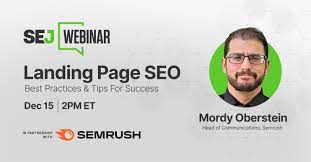SEO My Site: A Guide to Optimizing Your Website for Search Engines
Search Engine Optimization (SEO) is a crucial aspect of any successful website. By optimizing your site for search engines, you can improve your visibility, attract more organic traffic, and ultimately grow your online presence. Here are some key steps to help you SEO your site effectively:
Keyword Research
Start by conducting thorough keyword research to identify relevant keywords and phrases that your target audience is searching for. Use tools like Google Keyword Planner or SEMrush to discover high-volume keywords with low competition.
On-Page Optimization
Optimize your website’s on-page elements, including title tags, meta descriptions, headings, and image alt text. Make sure to include your target keywords naturally within your content while maintaining readability and relevance.
Quality Content
Create high-quality, engaging content that provides value to your audience. Regularly update your website with fresh content that incorporates your target keywords strategically. Content is king in SEO, so make sure yours is informative and well-written.
Mobile-Friendliness
Ensure that your website is mobile-friendly and responsive across all devices. Google prioritizes mobile-friendly websites in its search results, so optimizing for mobile is essential for SEO success.
Page Speed Optimization
Improve your website’s loading speed by optimizing images, minifying CSS and JavaScript files, and leveraging browser caching. A fast-loading website not only enhances user experience but also boosts your search engine rankings.
Link Building
Create a strong backlink profile by acquiring high-quality inbound links from reputable websites in your industry. Guest posting, social media promotion, and influencer collaborations are effective strategies for building backlinks organically.
Monitor Performance
Regularly monitor your website’s performance using tools like Google Analytics and Google Search Console. Track key metrics such as organic traffic, keyword rankings, and conversion rates to evaluate the effectiveness of your SEO efforts.
By following these essential steps and staying up-to-date with the latest SEO trends and best practices, you can effectively optimize your website for search engines and drive sustainable organic traffic to your site.
9 Essential SEO Tips to Boost Your Website’s Performance
- 1. Conduct keyword research to identify relevant keywords for your website.
- 2. Optimize your website’s meta tags, including title tags and meta descriptions.
- 3. Create high-quality and engaging content that is valuable to your target audience.
- 4. Improve website loading speed for better user experience and SEO performance.
- 5. Use internal linking to help search engines understand the structure of your website.
- 6. Optimize images by using descriptive filenames and alt text to improve accessibility and SEO.
- 7. Ensure your website is mobile-friendly for better rankings on mobile search results.
- 8. Regularly update your website with fresh content to show search engines that it is active and relevant.
- 9. Monitor your site’s performance using tools like Google Analytics to track traffic, user behavior, and keyword rankings.
1. Conduct keyword research to identify relevant keywords for your website.
Conducting keyword research is a crucial first step in optimizing your website for search engines. By identifying relevant keywords that align with your content and target audience’s search queries, you can strategically incorporate them into your website’s content, meta tags, and headings. This helps search engines understand the context of your site and improves its visibility in search results, ultimately driving more organic traffic to your website.
2. Optimize your website’s meta tags, including title tags and meta descriptions.
Optimizing your website’s meta tags, such as title tags and meta descriptions, is a crucial step in improving your site’s search engine optimization (SEO) performance. Title tags provide a concise and descriptive summary of each webpage’s content, while meta descriptions offer a brief preview of what users can expect when they click on the link in search results. By strategically incorporating relevant keywords into these meta tags and ensuring they accurately reflect the content on the page, you can enhance your website’s visibility and click-through rates, ultimately driving more organic traffic to your site.
3. Create high-quality and engaging content that is valuable to your target audience.
Creating high-quality and engaging content that provides value to your target audience is essential for effective SEO. By offering valuable information, insights, or solutions through your content, you not only attract and retain visitors to your site but also establish credibility and authority in your industry. Quality content that resonates with your audience can drive organic traffic, encourage social sharing, and improve search engine rankings, ultimately leading to increased visibility and engagement for your website.
4. Improve website loading speed for better user experience and SEO performance.
Improving website loading speed is a critical aspect of SEO optimization. A fast-loading website not only enhances user experience by reducing bounce rates and increasing user engagement but also plays a significant role in improving SEO performance. Search engines like Google prioritize websites that load quickly, as it indicates a better user experience. By optimizing images, minifying CSS and JavaScript files, and leveraging browser caching, you can enhance your website’s loading speed, leading to improved search engine rankings and overall site performance.
5. Use internal linking to help search engines understand the structure of your website.
Internal linking is a powerful SEO strategy that helps search engines understand the structure of your website and prioritize important pages. By strategically linking relevant pages within your site, you can establish a hierarchy of information and guide search engine crawlers to discover and index your content more effectively. Additionally, internal links can improve user navigation and encourage visitors to explore more of your website, ultimately enhancing the overall user experience. By incorporating internal linking as part of your SEO strategy, you can boost your site’s visibility and authority in search engine results.
6. Optimize images by using descriptive filenames and alt text to improve accessibility and SEO.
Optimizing images is a crucial aspect of SEO. By using descriptive filenames and alt text, you not only improve the accessibility of your website for visually impaired users but also enhance its search engine visibility. Search engines rely on alt text to understand the content of images, so incorporating relevant keywords in your alt text can help improve your site’s SEO performance. Additionally, descriptive filenames make it easier for search engines to index and rank your images, further boosting your overall SEO efforts.
7. Ensure your website is mobile-friendly for better rankings on mobile search results.
Ensuring that your website is mobile-friendly is crucial for improving your rankings on mobile search results. With the increasing number of users accessing the internet via mobile devices, search engines prioritize websites that provide a seamless and responsive experience across all screen sizes. By optimizing your site for mobile, you not only enhance user experience but also signal to search engines that your website is accessible and user-friendly, leading to better visibility and higher rankings in mobile search results.
8. Regularly update your website with fresh content to show search engines that it is active and relevant.
Regularly updating your website with fresh content is a crucial aspect of SEO. By consistently adding new and relevant content, you demonstrate to search engines that your site is active and up-to-date. This signals to search engine algorithms that your website is a valuable resource for users, which can lead to improved rankings and increased visibility in search results. Keeping your content fresh not only helps attract more organic traffic but also engages your audience and encourages them to return to your site for valuable information and updates.
9. Monitor your site’s performance using tools like Google Analytics to track traffic, user behavior, and keyword rankings.
Monitoring your website’s performance is a critical aspect of effective SEO. By utilizing tools such as Google Analytics, you can gain valuable insights into your site’s traffic, user behavior, and keyword rankings. Tracking these metrics allows you to assess the impact of your SEO efforts, identify areas for improvement, and make data-driven decisions to enhance your website’s visibility and performance in search engine results. Regularly monitoring and analyzing this data is essential for optimizing your site and maximizing its potential for success online.




